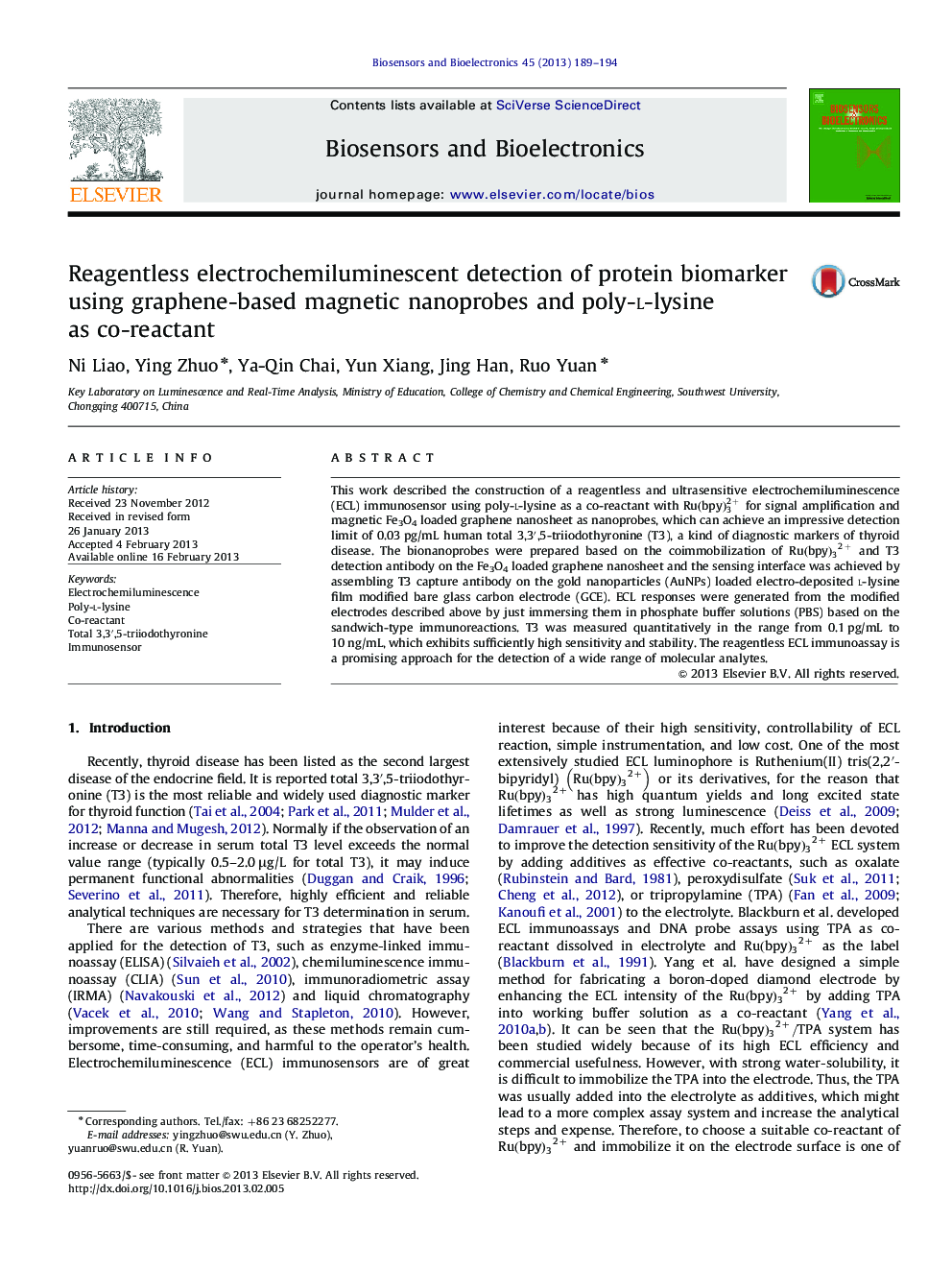| Article ID | Journal | Published Year | Pages | File Type |
|---|---|---|---|---|
| 867044 | Biosensors and Bioelectronics | 2013 | 6 Pages |
This work described the construction of a reagentless and ultrasensitive electrochemiluminescence (ECL) immunosensor using poly-l-lysine as a co-reactant with Ru(bpy)32+ for signal amplification and magnetic Fe3O4 loaded graphene nanosheet as nanoprobes, which can achieve an impressive detection limit of 0.03 pg/mL human total 3,3′,5-triiodothyronine (T3), a kind of diagnostic markers of thyroid disease. The bionanoprobes were prepared based on the coimmobilization of Ru(bpy)32+Ru(bpy)32+ and T3 detection antibody on the Fe3O4 loaded graphene nanosheet and the sensing interface was achieved by assembling T3 capture antibody on the gold nanoparticles (AuNPs) loaded electro-deposited l-lysine film modified bare glass carbon electrode (GCE). ECL responses were generated from the modified electrodes described above by just immersing them in phosphate buffer solutions (PBS) based on the sandwich-type immunoreactions. T3 was measured quantitatively in the range from 0.1 pg/mL to 10 ng/mL, which exhibits sufficiently high sensitivity and stability. The reagentless ECL immunoassay is a promising approach for the detection of a wide range of molecular analytes.
► Firstly choosing poly-l-lysine as a co-reactant to significantly enhances the ECL of Ru(bpy)32+Ru(bpy)32+. ► Using Ru(bpy)32+Ru(bpy)32+ loaded magnetic graphene nanosheet as signal tags. ► A reagentless and ultrasensitive ECL immunosensor for T3 was constructed.
